Motion capture Mayuko Aoki | ||
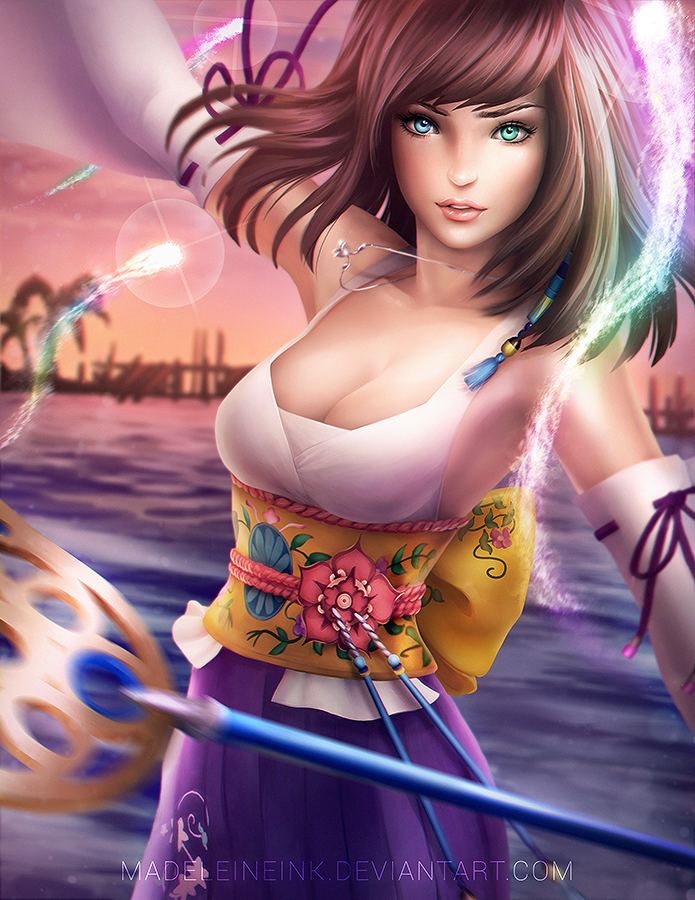 | ||
Designed by Tetsuya NomuraTetsu Tsukamoto (X-2) Weapon Staff (FFX)Guns (FFX-2) Similar Tidus, Rikku, Auron, Tifa Lockhart, Lightning | ||
Yuna (ユウナ, Yūna) is a fictional character from Square Enix's Final Fantasy series. She was first introduced as the female protagonist and one of the main playable characters of the 2001 role-playing video game Final Fantasy X, appearing as a summoner embarking on a journey to defeat the world-threatening monster Sin alongside her companions, including the male protagonist Tidus. Yuna reappears in Final Fantasy X-2, where she becomes the protagonist, searching for a way to find Tidus two years following his disappearance. Yuna has also been featured in other Square Enix games, notably Dissidia 012 Final Fantasy.
Contents
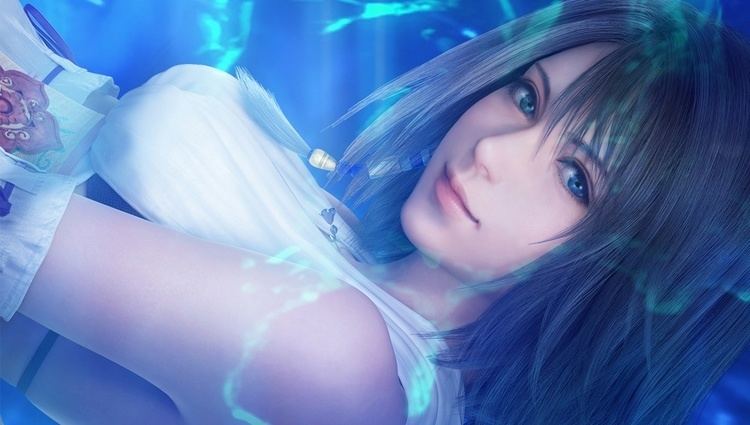
Tetsuya Nomura based Yuna's overall design on hakama, but also wanted to give her outfit something that would flow and so gave her a furisode. Nomura said that her name means "night" in the Okinawan language, which contrasts with Tidus' name, which is Okinawan for "sun". For Final Fantasy X-2, the game's staff wanted Tetsu Tsukamoto to redesign her costume to reflect her personality and the game's atmosphere. Yuna's character was well received by many media critics and fans and in particular praised for her relationship to Tidus, as well as her characterization and sex appeal. Despite this positive reception, there was a mixed reception for her role in Final Fantasy X-2 due to her redesign.
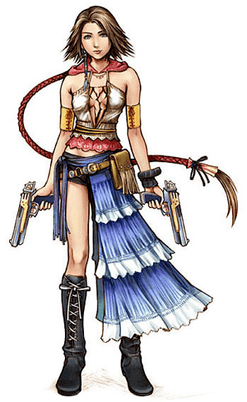
Appearances
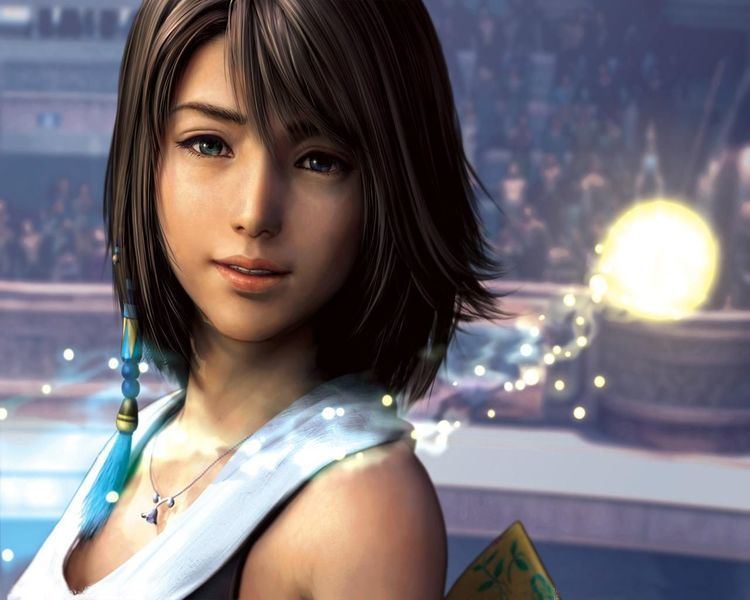
In Final Fantasy X, Yuna is introduced as a summoner who can use healing magic and is able to summon powerful magical entities called aeons with help from spirits known as Fayths. Already known throughout Spira as the daughter of High Summoner Braska, who previously brought a brief respite from Sin's destruction ten years earlier, Yuna decides to embark on the summoner's pilgrimage to become a High Summoner herself. Yuna must journey to temples across the world, acquire the aeon from each and summon the Final Aeon in a battle that will kill them both. She gradually becomes more open and falls in love with Tidus. Upon arriving at the place where Yuna can summon the final aeon, Tidus persuades the group to look for another way to defeat Sin without using any sacrifices. After entering Sin's body, Yuna and her guardians defeat the disembodied spirit of Yu Yevon, who is responsible for reviving Sin after each defeat, allowing an eternal Calm to start in Spira. However, Tidus disappears as he is the product of the Fayth, who could not depart until Sin's defeat.
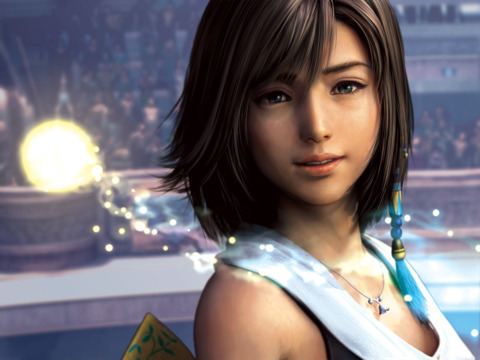
In Final Fantasy X-2, set two years after Final Fantasy X, Yuna is a member of the sphere hunting group Gullwings, along with Rikku and Paine. In the game's international version, the Gullwings go their separate ways before the game's opening, with Yuna returning to Besaid Island. The trio then reunite to explore a tower. In X-2, Yuna journeys to Spira in search of the truth behind a sphere containing a video featuring a man resembling Tidus in prison. During her journey, Yuna discovers the man from the sphere was actually Shuyin, a spirit who wishes to destroy Spira in revenge for the death of his lover, Lenne. The Gullwings defeat Shuyin who departs to the afterlife with Lenne's spirit. Depending on the player's progress throughout the game, the Fayth may revive Tidus so that she can reunite with him. The HD Remastered version of the game adds a new audio drama where Yuna becomes a part of the group called Yevoners whose main temple is located on Besaid. In the story she breaks up with Tidus after telling him she loves somebody else before declaring she will fight Sin once again.
She also appears in Dissidia 012 Final Fantasy, an action game that features several Final Fantasy characters, as one of the characters to be summoned by the goddess Cosmos to participate in a war against her rival Chaos. For this game, Yuna appears in her Final Fantasy X form but sightly arranged to fit with the game's cast. Additionally, she has an alternative design based on Yoshitaka Amano's illustration, and a wedding dress from Final Fantasy X. Her Final Fantasy X-2 regular form was made available as downloadable content.
Outside the Final Fantasy series, Yuna appears in Kingdom Hearts II as a pixie along with Paine and Rikku. Bribed by Maleficent into spying on Leon's group, the pixies eventually switch sides after being abandoned by the witch and told of Sora's cause. Yuna is also featured in the board game style video game Itadaki Street Special, appearing alongside Auron and Tidus, and represents Final Fantasy X in the rhythm game Theatrhythm Final Fantasy.
Multiple figures and figurines of Yuna were produced by various manufacturers, including a 2001 figure by Square. A 2003 audio CD Final Fantasy X-2 Vocal Collections features performances by Mayuko Aoki, Marika Matsumoto and Megumi Toyoguchi, the voice actresses for Yuna, Rikku and Paine, respectively.
Creation and development
According to Tetsuya Nomura, he based Yuna's overall design on hakama, a type of traditional Japanese clothing. Nomura said that when he learned the character was to perform a dance called the "sending," he wanted to give her outfit something that would flow. For this reason, the specific type of kimono he chose for her was a furisode, a long-sleeved kimono. Nomura also said that he adorned Yuna's dress and necklace with images of the hibiscus flower also called "yuna," and that her name carries the meaning of "night" (夕な) in Okinawan, establishing a contrast between her and the lead male protagonist of Final Fantasy X, Tidus, whose Japanese name (ティーダ) translates to "sun" (太陽) in Okinawan. This contrast is also represented in-game by items named for the sun and moon that empower Tidus' and Yuna's most powerful weapons. Nomura explains that while all these subtle details may be unneeded, he wanted his designs to have meaning behind them.
The positive fan reaction to Final Fantasy X convinced the developers to continue the story of Yuna and other characters with Final Fantasy X-2. Costume designer Tetsu Tsukamoto said that the radical design changes for Yuna from one game to the other reflected a huge cultural change. Producer Yoshinori Kitase added that they did not want to make Final Fantasy X-2 feel like an extension of its predecessor, so they changed the clothing of Yuna, Rikku and others' to make them seem more active. This was accomplished before the story and setting were created. Because Yuna, Rikku and Paine live in a more care-free world, the designers wanted them to be able to dress up, a feature which became key to the gameplay. Scenario writer Kazushige Nojima described her new outfit as a "natural reaction to the heavy stuff she wore in FFX." Yuna's singing performance was used to demonstrate the pop feel that the game incorporates. Final Fantasy X director Motomu Toriyama said her personality was the result of not having her bear the responsibility of being a summoner anymore. He added that while "she could be seen as a completely different person, ... deep in her heart, she is the same old Yuna."
In the Japanese versions of the games Yuna has been voiced by Mayuko Aoki. Hedy Burress provides the character's voice in the English adaptations of the game. In voicing Yuna, Burress remembers trying to translate Yuna's duty, respect and honor, but also wanting to retain the gentleness and femininity of her character. When commenting on how the audiences would react to Final Fantasy X, Burress said that she wanted them to participate in the game itself and to "transport them into a completely different world" through the voices.
Reception
Yuna received positive critical reception for her appearance in Final Fantasy X. Chris Reiter of Gaming Target ranked her as the third best "PlayStation 2 babe", describing her as "the star heroine whose soft features, kindness, and her unique story makes her one of the better beauties to love." In 2008, Chip ranked her as the 13th top "girl of gaming". In 2012, Larry Hester of Complex ranked the original version of Yuna as the 20th "hottest" video game character yet. That same year, Heath Hooker of GameZone ranked Yuna the ninth top Final Fantasy character, calling her "one of the strongest female characters in the entire Final Fantasy franchise" and stating "the depth of character Yuna presents to the player is unfathomable and is one reason why she lands on this list." In 2013, Complex editors Michael Rougeau and Gus Turner listed Yuna at number 21 on the list of the greatest heroines in video game history. ranked Yuna as the sixth greatest Final Fantasy character of all time. However, PSU.com retrospectively called Yuna an underrated character and stated that she was overlooked due to Auron and Rikku.
GamesRadar listed Yuna as one of the 25 best new characters of the 2000s, describing the romance between her and Tidus as "legendary" and Yuna herself as compassionate, generous and dutiful. Yuna and Tidus were included on the list of "great loves" by Matthew Rorie of GameSpot in 2006, while AJ Glasser of GamesRadar in 2008 listed them as the second best Square Enix couple. Their kiss scene was declared as number two best in video games by Lisa Foiles of The Escapist, and Yuna's abortive wedding with Seymour was also ranked as the third memorable matriminy in the history of PlayStation by Official PlayStation Magazine in 2014.
Yuna's design change in Final Fantasy X-2 received a mixed reception. Rob Wright of Tom's Hardware included her among the 50 greatest female characters in video game history. Jeremy Dunham of IGN praised the clothing designs, combining "proven and recognizable Final Fantasy styles" with a "revealing neo-modern fashion sense", referencing her warrior costume as a stand-out, and also said that English voice actress Hedy Burress' portrayal seemed more comfortable as opposed to the previous game. Brad Shoemaker of GameSpot praised Burress' voice acting, saying that it brought her fully to life in accordance with the other changes in the character. The book Packaging Girlhood: Rescuing Our Daughters from Marketers' Schemes described Yuna's appearance as being a "sexy MTV video star", adding that it is a "lesson to girls that being brave, strong, and ready to fight can only last so long - the next adventure is fashion, boyfriends, and sex." GameSpy's Raymond "Psylancer" Padilla called her "the video-game vixen of my dreams." Christian Nutt, also of GameSpy, described Burress' portrayal of Yuna in X-2 as superb. Various publications compared Yuna to other fictional characters, including the Charlie's Angels's Natalie Cook as portrayed by Cameron Diaz; and Tomb Raider star Lara Croft, due to her attire and gun-wielding skills. In 2008, GameDaily listed the Final Fantasy X-2 incarnation of Yuna as one of the top 50 hottest video game women, praising her revealing outfit as well as her alternate costumes. That same year, she was ranked as the tenth on top Final Fantasy character by IGN, commenting that while her original appearance made her "fine eye-candy" and her sending scene was one of the best works by the CG studio Square Visual Works, it was the sequel that gave her more confidence and attitude, as well as "a gratuitously exploitative costume that ranks among the series' finest bits of fanboy-baiting."
The character also gained a significant and enduring popularity among the gamer public, especially in Japan. Readers of Game Informer voted Yuna's relationship with Tidus as the best of 2001. Yuna was voted the 10th most popular video game character in Japan in a 2008 Oricon poll, as well as 16th in a similar poll by Famitsu 2010. In a 2010 ASCII Media Works poll in which Japanese fans would vote whose video game or manga character would like to name their children after, Yuna came second in the female category. In official Square Enix polls, Yuna was voted the third most commonly favorite female Final Fantasy character in 2013 and the most popular Final Fantasy heroine in 2014.
